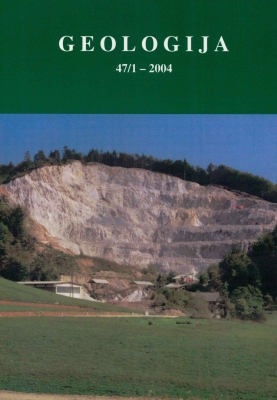Rudist and foraminifer assemblages in the Santonian-Campanian sequence of Nanos Mountain (Western Slovenia)
DOI:
https://doi.org/10.5474/geologija.2004.004Abstract
The Santonian-Campanian limestones of Nanos Mountain are mainly characterized by wackestone-packstone with benthic foraminifers, thaumatoporellaceans and rudists. Rudists in growth position are rare and rudist congregations are found only in bouquets with less than ten individuals. Rudist shells are chaotically deposited in beds and frequently show signs of bioturbation and erosion. The analyzed sequence from Nanos Mountain testifies an inner shelf environment in a ramp-like depositional setting. In the lower part of the sequence, rudist assemblages are characterized by abundant hippuritids and radiolitids whereas benthic foraminifers are rare and poorly preserved. In the upper part of the sequence, rudist assemblages consist of abundant radiolitids and rare hippuritids. Benthic foraminifers are usually well-preserved and the presence of the Keramosphaerina tergestina (Stache) is recorded. The vertical distribution of rudist and foraminifer assemblages with the presence of K. tergestina reflect sea level changes in an inner shelf environment during Santonian-Campanian.Downloads
How to Cite
Caffau, M., & Pleničar, M. (2004). Rudist and foraminifer assemblages in the Santonian-Campanian sequence of Nanos Mountain (Western Slovenia) . Geologija, 47(1), 41–54. https://doi.org/10.5474/geologija.2004.004
Issue
Section
Articles

